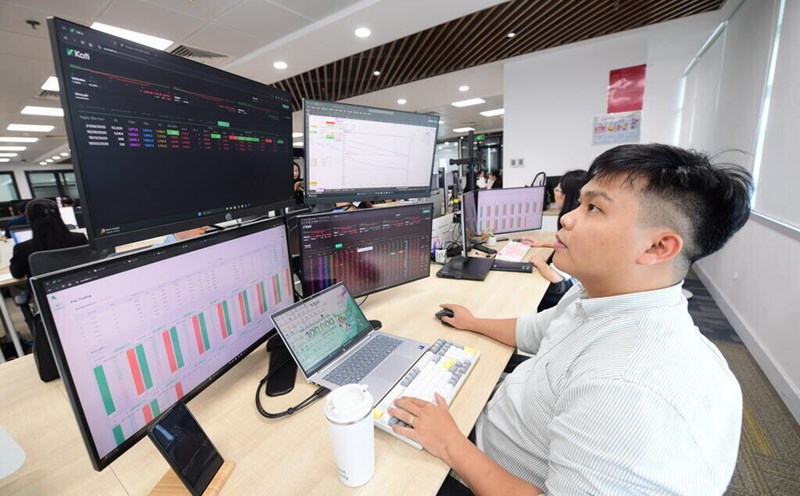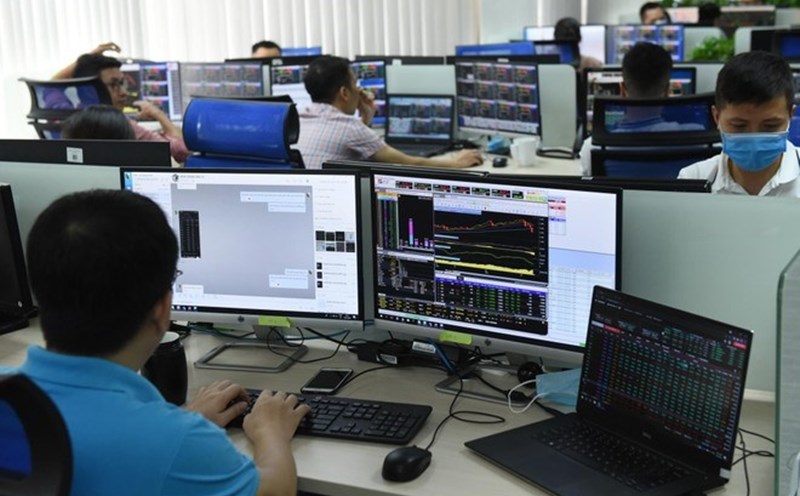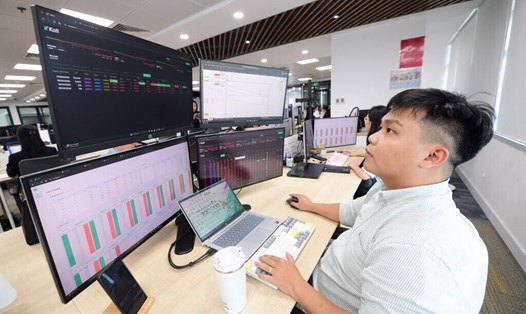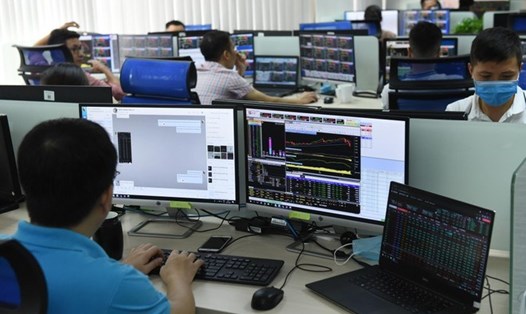Market adjustment, creating room for new cash flow
Mr. Nguyen Minh Hoang, Director of Analysis, Nhat Viet Securities Company, said that the main reason for the recent adjustment was that the market had increased too much. VN-Index went from 1,100 points to nearly 1,800 points, an increase of more than 600 points, so investors taking profits is a natural reaction. Selling pressure mainly comes from profitable investors who want to preserve profits or restructure their portfolios due to low efficiency, said Mr. Hoang.
According to Mr. Hoang, after a long period of increase, the market needs a correction to make valuations more reasonable and create room for new cash flow to return. Currently, the differentiation between stock groups is very high, in the current price range, the stock market has become more attractive to long-term investors, especially for businesses with good fundamentals, not increasing too much like HPG.
Some large-cap stocks have adjusted 20-25%, even 30-40%, and are gradually entering the balance zone.
Like the securities group, SSI and VIX have fallen sharply, while VCI has almost held steady due to a decrease of about 40%. When stocks have reached that threshold, it is difficult to decrease further. Investors should not be too optimistic or wait for a 60-70% reduction, that is unreasonable, said Mr. Hoang.
According to statistics from Nhat Viet, in the past 12 years, if we consider the months of October and October every year, there have been only 4 years of market increase in November. This shows that November is often the differentiation period, while the market will flourish in December - the time when organizations close their portfolios and personal cash flow start buying to celebrate Tet.
Cash flow in the coming time is forecast to focus on construction materials, finance and consumption, areas that can lead the market. In addition, medium-term cash flow has also begun to return, although it is still cautious and following the plan.
Mr. Hoang said that the banking group needs to be closely monitored. "Currently, many bank codes have touched the strong support zone. If the VN-Index wants to move up to the 1,900-2,000 point range, there must be a leading bank line, said Mr. Hoang. With valuations at a reasonable level and credit growth expected to be 18-20% for the year, banks are still the group with a good foundation and great room for recovery.
According to Mr. Hoang, if the leading group can keep the pace, the market can enter a "brilliant Spring" in the coming months. "The important thing at this time is to review the portfolio, wait for clear signal confirmation to choose a suitable strategy and go with the market in the new growth cycle," Mr. Hoang recommended.
Cash flow shows signs of returning
Mr. Phan Tan Nhat - Head of Market Strategy, SHS Securities Company - said that cash flow is showing signs of returning to some groups of stocks after the correction.
According to Mr. Nhat, under the impact of large-cap stocks (VN30), the general index is entering the accumulation phase after a series of strong increases before. The pressure to take profits in the high price range is clearly seen, especially in many leading stocks with good fundamentals, when the VN-Index tests the 1,700 point range.
In the short term, the long-term uptrend from April 2025 seems to have reached the end, causing the market to strongly differentiate, Mr. Nhat commented.
According to SHS's observations, the market is currently forming two main trends.
Firstly, selling pressure has increased in stocks in recent times and is having a high leverage ratio. This is a group that is strongly affected by the widespread profit-taking mentality.
Second, cash flow has begun to return to groups of stocks that have adjusted deeply to the price range of May-May 2025, especially those that have announced positive Q3 business results.
This is a signal that investors are re-screening their portfolios, directing capital flows to stocks with good fundamentals and clear growth prospects, said Mr. Nhat.
Mr. Nhat said that the current period requires investors to maintain a reasonable portfolio ratio, avoiding using high leverage. A suitable strategy is to prioritize leading enterprises with attractive valuations and stable business results, because this will be the group with the ability to recover early when the market enters the next uptrend.
The investment goal should focus on strategic sectors that are likely to lead the economic growth momentum in the coming time, instead of chasing short-term waves, Mr. Nhat recommended.











